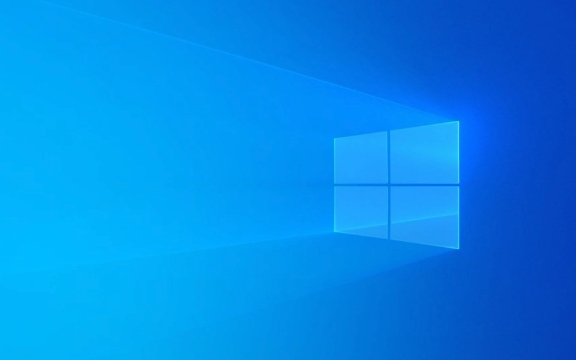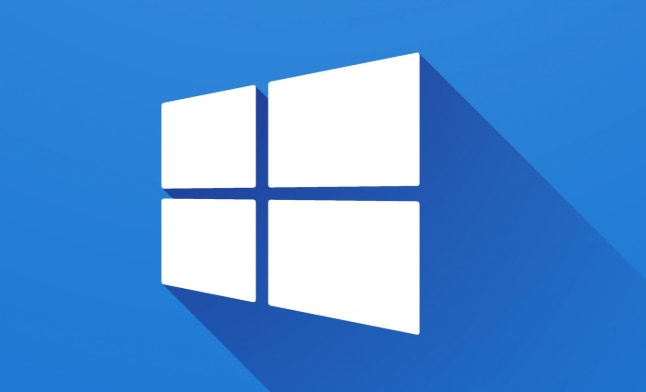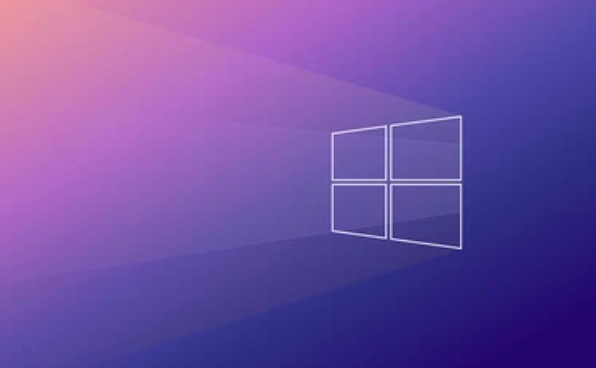The Wi-Fi icon is missing Solution: 1. Check the "Notification Area" setting of the taskbar to ensure that the "Network" is on; 2. Turn off the system automatic hidden option and restart the resource manager; 3. Update or reinstall the wireless network card driver and run sfc /scannow to check the system files. In most cases, the icon display can be restored through the above steps.

The Wi-Fi icon on the taskbar is gone, which is not uncommon on Windows systems. It may be caused by system setup tuning, resource management conflicts, or driver issues. Don't worry, it can be easily solved in most cases.

The following are some common reasons and corresponding treatment methods, which are suitable for ordinary users to operate on their own.

1. Check the taskbar "Notification Area" settings
Sometimes Windows will automatically hide the Wi-Fi icon, you just need to call it out manually.
- Right-click the blank space of the taskbar and select "Taskbar Settings".
- Find the Notification Area under Search and click "Select Which Icons Show on the Taskbar".
- Make sure the "network" item is "on".
After setting this way, the Wi-Fi icon will usually reappear in the lower right corner of the taskbar.

2. Network icons are hidden by system optimization (suitable for Win10/Win11)
Some versions of Windows may automatically hide the Wi-Fi icon when they detect that only one network is connected.
- Open Settings → Network and Internet → Status.
- Scroll down to find "Network and Sharing Center" (may need to click "More Network Settings" in "Related Settings".
- Click "Change Advanced Sharing Settings" in the menu on the left.
- Check if "Auto Connect to Recommended Open Hotspot" or similar options are enabled, turning off these features can sometimes restore the icon.
You can also try restarting the Explorer:
- Press
Ctrl Shift Escto open Task Manager. - Find "Windows Explorer" and right-click to select "Restart".
3. Driver or system files are corrupted
If the above method does not work, it may be a problem with the wireless network card driver.
You can try the following steps:
- Press
Win Xand select Device Manager. - Expand "Network Adapter", right-click on your wireless network card (usually with the words "Wireless"), and select "Update Driver".
- If it doesn't work, you can try "Uninstall the device", then restart the computer, and let the system automatically reinstall the driver.
In addition, running the system file checker is also helpful:
- Open a command prompt (administrator permissions).
- Enter:
sfc /scannowand press Enter to execute.
This process may take several minutes, and after completion, restart the computer to see if there is any improvement.
Basically these common methods. Most of the time, it can be done by adjusting the taskbar settings or restarting the Explorer. If it still doesn't work, consider driver or system level issues. Not complicated but it is easy to ignore details, such as the impact of system optimization options, which often make people mistakenly think it is a big problem.
The above is the detailed content of Windows Wi-Fi icon is missing from the taskbar. For more information, please follow other related articles on the PHP Chinese website!

Hot AI Tools

Undress AI Tool
Undress images for free

Undresser.AI Undress
AI-powered app for creating realistic nude photos

AI Clothes Remover
Online AI tool for removing clothes from photos.

Clothoff.io
AI clothes remover

Video Face Swap
Swap faces in any video effortlessly with our completely free AI face swap tool!

Hot Article

Hot Tools

Notepad++7.3.1
Easy-to-use and free code editor

SublimeText3 Chinese version
Chinese version, very easy to use

Zend Studio 13.0.1
Powerful PHP integrated development environment

Dreamweaver CS6
Visual web development tools

SublimeText3 Mac version
God-level code editing software (SublimeText3)
 How to reset the TCP/IP stack in Windows
Aug 02, 2025 pm 01:25 PM
How to reset the TCP/IP stack in Windows
Aug 02, 2025 pm 01:25 PM
ToresolvenetworkconnectivityissuesinWindows,resettheTCP/IPstackbyfirstopeningCommandPromptasAdministrator,thenrunningthecommandnetshintipreset,andfinallyrestartingyourcomputertoapplychanges;ifissuespersist,optionallyrunnetshwinsockresetandrebootagain
 A guide to custom Windows installation options
Aug 01, 2025 am 04:48 AM
A guide to custom Windows installation options
Aug 01, 2025 am 04:48 AM
Choose"Custom:InstallWindowsonly(advanced)"forfullcontrol,asitallowsacleaninstallthatremovesoldissuesandoptimizesperformance.2.Duringsetup,managepartitionsbydeletingoldones(afterbackingupdata),creatingnewpartitions,formatting(usingNTFS),ors
 Step-by-step guide to installing Windows from an ISO file
Aug 01, 2025 am 01:10 AM
Step-by-step guide to installing Windows from an ISO file
Aug 01, 2025 am 01:10 AM
DownloadtheWindowsISOfromMicrosoft’sofficialsite.2.CreateabootableUSBusingMediaCreationToolorRufuswithaUSBdriveofatleast8GB.3.BootfromtheUSBbyaccessingthebootmenuoradjustingBIOS/UEFIsettings.4.InstallWindowsbyselectingcustominstallation,choosingtheco
 How to manage AppLocker policies in Windows
Aug 02, 2025 am 12:13 AM
How to manage AppLocker policies in Windows
Aug 02, 2025 am 12:13 AM
EnableAppLockerviaGroupPolicybyopeninggpedit.msc,navigatingtoApplicationControlPolicies,creatingdefaultrules,andconfiguringruletypes;2.Createcustomrulesusingpublisher,path,orhashconditions,preferringpublisherrulesforsecurityandflexibility;3.Testrules
 how to fix 'reboot and select proper boot device' on a win pc
Aug 01, 2025 am 05:20 AM
how to fix 'reboot and select proper boot device' on a win pc
Aug 01, 2025 am 05:20 AM
First,checkandcorrectthebootorderinBIOS/UEFItoensuretheWindowsdriveistheprimarybootdevice.2.VerifytheWindowsdriveisdetectedinBIOSunderstorageordrives.3.Ifnotdetected,troubleshoothardwareconnectionsbyreseatingSATAandpowercablesfordesktopsorreseatingth
 How to troubleshoot a failed Windows installation
Aug 02, 2025 pm 12:53 PM
How to troubleshoot a failed Windows installation
Aug 02, 2025 pm 12:53 PM
VerifytheWindowsISOisfromMicrosoftandrecreatethebootableUSBusingtheMediaCreationToolorRufuswithcorrectsettings;2.Ensurehardwaremeetsrequirements,testRAMandstoragehealth,anddisconnectunnecessaryperipherals;3.ConfirmBIOS/UEFIsettingsmatchtheinstallatio
 What are the main pros and cons of Linux vs. Windows?
Aug 03, 2025 am 02:56 AM
What are the main pros and cons of Linux vs. Windows?
Aug 03, 2025 am 02:56 AM
Linux is suitable for old hardware, has high security and is customizable, but has weak software compatibility; Windows software is rich and easy to use, but has high resource utilization. 1. In terms of performance, Linux is lightweight and efficient, suitable for old devices; Windows has high hardware requirements. 2. In terms of software, Windows has wider compatibility, especially professional tools and games; Linux needs to use tools to run some software. 3. In terms of security, Linux permission management is stricter and updates are convenient; although Windows is protected, it is still vulnerable to attacks. 4. In terms of difficulty of use, the Linux learning curve is steep; Windows operation is intuitive. Choose according to requirements: choose Linux with performance and security, and choose Windows with compatibility and ease of use.
 How to change screen resolution in Windows
Aug 02, 2025 pm 03:08 PM
How to change screen resolution in Windows
Aug 02, 2025 pm 03:08 PM
Right-clickthedesktopandselect"Displaysettings"toopenthedisplayoptions.2.Underthe"Display"section,clickthe"Displayresolution"dropdownandchoosearesolution,preferablytherecommendedoneforbestimagequality.3.Confirmthechanges






